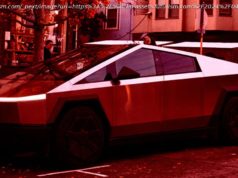Yes, it’s really been three years since Ford first announced the return of the Bronco at the 2017 Detroit Auto Show. It’s been…
Yes, it’s really been three years since Ford first announced the return of the Bronco at the 2017 Detroit Auto Show. It’s been a long wait, but now, we’re finally on the cusp of seeing the new 2021 Ford Bronco in all its blocky glory.
From the start of the nameplate’s production in 1965, the Bronco has lived several distinct lives. So before we move forward into the model’s future, it’s time to take a look back.
Despite growing to occupy larger segments in future iterations, the original Bronco was destined to be a compact SUV, going up against the likes of the International Harvester Scout and the JeepCJ-5. Recreational utility vehicles were still very new at this point, giving Ford the opportunity to take a crack at a burgeoning segment.
None other than legendary auto exec Lee Iacocca approved the first-generation Bronco for production in early 1964. Its chassis was unique in that no other Ford-family vehicle utilized its short, 92-inch wheelbase. Four-wheel drive was standard at first, rocking Dana drivetrain components from the axles to the transfer case.
At launch, the Bronco’s sole engine was a 2.8-liter I6 (based on the engine in the Falcon sedan) making 105 horsepower. The next year, a 200-hp, 4.7-liter V8 would be offered, expanding to 5 liters by the 1969 model year. A 4.7-liter I6 was the standard powertrain offering starting in the 1973 model year, continuing through the generation’s end in 1977.
The first-gen Bronco’s look was no-nonsense, opting for things like flat glass panels to keep costs in control and simple-to-press sheetmetal forms. It was available in three different body styles, including the usual two-door configuration, in addition to more interesting variants like an open-top roadster. As the years went on, though, these bodies were eventually shelved in favor of the most popular two-door «wagon» layout. Sales averaged between 14,000 and 25,000 units per year throughout its run.
Since the Bronco’s inception, the SUV segment started taking off. But compact SUVs weren’t the object of everyone’s attention by the late 1970s — larger models grew in popularity, despite the aftereffects of the 1973 oil crisis. But with vehicles like the Chevrolet K5 Blazer and the Jeep Cherokee, Ford needed to react to the market’s whims.
And so, the second-gen Bronco grew — a lot. Borrowing its chassis from the F-100 pickup (a trend that would continue in later generations), the 1978 Bronco added an entire foot to its wheelbase, in addition to growing 11 inches wider and 4 inches taller. A Dana 44 solid front axle worked alongside a Ford 9-inch rear axle, making this the last Bronco without independent front suspension. Four-wheel drive remained standard for the second-gen Bronco. A three-door wagon was the only body style on offer this time around.






